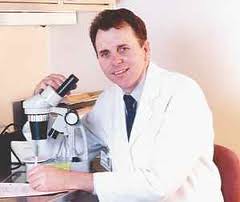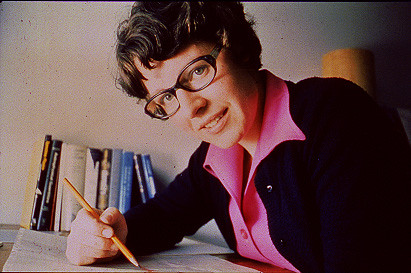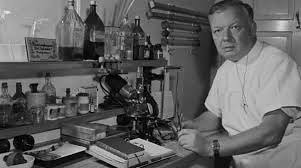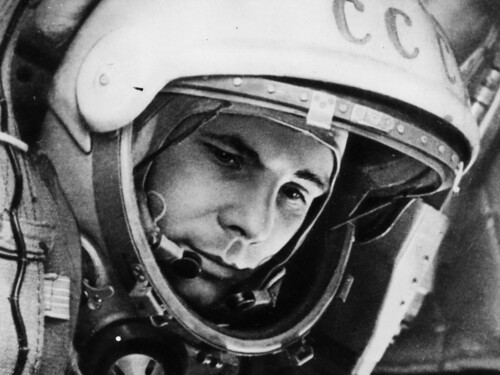The craze for design thinking
 First published in Design Principles and Practices journal, January 2012
First published in Design Principles and Practices journal, January 2012The historical and social reasons why hip designers talk of little else. Plus: elements of an alternative.
Here’s the introduction from the full paper, which can be downloaded from the link below:
In October 2009, Pharmaceutical Executive magazine ran an article on innovation by design. Among 26 mentions of the word ‘design’, nine occurred in the phrase ‘design thinking’. The article was written by two members of the Monitor Group, which is headquartered in Cambridge, Massachusetts, and is run by the world-renowned American management guru Michael Porter.
In a trade magazine, a serious article on design thinking – henceforth DT – is a step forward. What’s more, Monitor has clients among some of the world’s top international managers.
Its article begins by asserting that pharmaceuticals firms must confront ‘multi-layered demands’ and must, in particular, ‘explore new business models while attending to their existing, highly profitable commercial model’. It suggests that designers excel at solving such challenges, and that DT could help pharmaceutical companies ‘frame healthcare challenges holistically, taking into account the needs of all stakeholders’.
Such firms, it’s maintained, should absorb the experience of customers and non-customers, and the contexts in which they live and act; should use cultural anthropologists, social scientists, and ethnographers to add to traditional market research; should draw connections to other fields of study and industries, and should get ‘main insights from the market itself’ – through the rapid prototyping of new models with lead users and non-users in their natural environments.
Throughout, Monitor gives examples of DT in practice – both inside healthcare (the Mayo Clinic and Kaiser Permanente), and outside it (Procter & Gamble). Inside pharmaceuticals, it contends, DT can help firms partner with doctors to help them run more successful business practices; can help budget-holders for health care explore ‘dramatically different models of cooperation and risk management’, and can give patients intuitive, clear information and convenient solutions that enable them to ‘participate in their own care’. In its conclusions, the article notes:
‘Of course, design capabilities are complements to, not substitutes for, the existing innovation capabilities of the [pharmaceutical] industry.’
Given the many, varied and substantial responsibilities that Monitor conferred upon DT, this careful sentence was well advised.
The same month as Monitor published, one leading US pharmaceutical company, Pfizer, announced its takeover of another, Wyeth, for $68 billion. Interestingly, Pfizer was already quick to play up, if not DT, then certainly a key aspect of it – what is now widely known in medical circles as ‘patient-centricity’. But by February 2010, something else happened: the company cut its 2012 budget for research and development (R&D), the most important of its ‘existing innovation capabilities’,from more than $8 billion to less than $7 billion. Pfizer also announced the closure of its main laboratories outside the US, which are located in the UK.
Obviously the loss of up to 2400 jobs at Sandwich, Kent, cannot be laid at the door of DT. But the Pfizer story raises two key issues around the conclusion of Monitor’s article:
- Is DT, and a designerly orientation to users, really just a complement to, not a substitute for, R&D?
- When DT claims to facilitate partnership with, and the participation of, stakeholders of all descriptions, are these claims to be taken at face value?
Precise definitions of DT vary and are rather elusive. Here, Monitor’s treatment of DT will have to suffice. Instead of definitions, this paper first examines the current craze for DT, and then looks at DT’s historical emergence over the past 50 years, focusing mainly, though not exclusively, on developments in the US and the UK. In line with perspectives published in 2010 as Big Potatoes: The London Manifesto for Design, the paper is critical of DT, arguing that it acts as a force broadly hostile to technological innovation. As well, the paper looks at the roots of DT today, and, in its conclusion, begins to outline an alternative approach.
The article can be downloaded at http://www.woudhuysen.com/wp-content/uploads/2014/05/Craze_4_DT_on_JW_WEBSITE-1.doc
Fmr President of Kenya on Trump cutting off foreign aid:
“Why are you crying? It’s not your government, he has no reason to give you anything. This is a wakeup call to say what are we going to do to help ourselves?”
America first is good for the world.
Our entire Green Socialist establishment should be banged up under the ‘Online Safety’ laws, for spreading demonstrable lies (the ‘climate crisis’), causing non-trivial harm to the industrial working class, ordinary drivers, farmers, taxpayers etc, etc.
#Chagos? #Mauritius PM Navin Ramgoolam "is reported to want Starmer to pay £800m a year, plus ‘billions of pounds in #reparations’." (14 January) https://www.spiked-online.com/2025/01/14/the-chagos-islands-deal-is-an-embarrassment/
Now the Torygraph wakes up https://telegraph.co.uk/gift/1ff8abbb462cd609
Read @spikedonline - first with the news!
Articles grouped by Tag
Bookmarks
Innovators I like

Robert Furchgott – discovered that nitric oxide transmits signals within the human body

Barry Marshall – showed that the bacterium Helicobacter pylori is the cause of most peptic ulcers, reversing decades of medical doctrine holding that ulcers were caused by stress, spicy foods, and too much acid

N Joseph Woodland – co-inventor of the barcode

Jocelyn Bell Burnell – she discovered the first radio pulsars

John Tyndall – the man who worked out why the sky was blue

Rosalind Franklin co-discovered the structure of DNA, with Crick and Watson

Rosalyn Sussman Yallow – development of radioimmunoassay (RIA), a method of quantifying minute amounts of biological substances in the body

Jonas Salk – discovery and development of the first successful polio vaccine

John Waterlow – discovered that lack of body potassium causes altitude sickness. First experiment: on himself

Werner Forssmann – the first man to insert a catheter into a human heart: his own

Bruce Bayer – scientist with Kodak whose invention of a colour filter array enabled digital imaging sensors to capture colour

Yuri Gagarin – first man in space. My piece of fandom: http://www.spiked-online.com/newsite/article/10421

Sir Godfrey Hounsfield – inventor, with Robert Ledley, of the CAT scanner

Martin Cooper – inventor of the mobile phone

George Devol – 'father of robotics’ who helped to revolutionise carmaking

Thomas Tuohy – Windscale manager who doused the flames of the 1957 fire

Eugene Polley – TV remote controls



0 comments